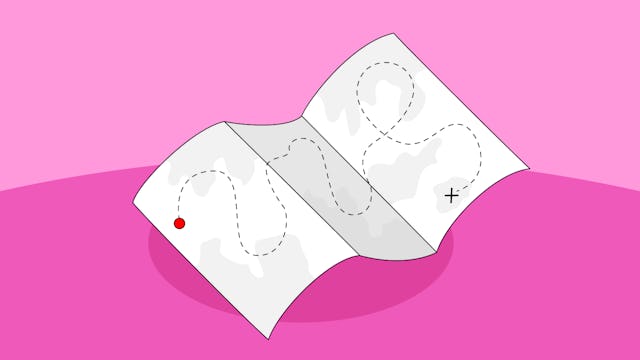1-3 Weeks Pregnant — Not Quite Pregnant...Yet

Welcome to Scary Mommy’s pregnancy week by week guide! We’re here to give you all the info about what to expect when you’re expecting: be it week by week symptoms, your baby’s development, your changing body, or ultrasounds and appointments. Here’s everything you need to know about weeks 1 through 3.
Your Body Weeks 1 Through 3 Pregnant
Week 1 — Not Quite Pregnant…Yet
While this week is used to calculate your due date, you’re not actually pregnant yet and won’t be for about two more weeks. Instead, this is the week you menstruate as your body sheds the uterine lining of the previous month in preparation for ovulation and eventual conception. Keeping tabs on the first day of your period will come in handy when you or your OB calculate your due date.
Week 2 — The Prep Work Begins
This week, as your body prepares for ovulation, your uterine lining will thicken for the possibility a fertilized egg will be looking for a cozy home for the next 9 months. Depending on the length of the cycle, most women ovulate between day 11 and 21. Once an ovary releases a mature egg, there is only a 12 to 36 hour window for it to be fertilized, but since sperm can live up to five days in a woman’s body, having unprotected sex during that window could result in pregnancy.
Week 3 — You’re Pregnant!
Following ovulation, the egg travels down the fallopian tube where it is fertilized by a sperm before making a beeline to the uterus where it will implant into the wall in week 4. Some women experience light implantation bleeding when this occurs. Long story short: You are now pregnant. Congratulations.
How to Calculate Your Due Date?
You don’t have to rely on your OB to find out your baby’s due date. The first day of your last menstrual cycle is the most important date to keep in mind when making this calculation. Since an average full term pregnancy is about 40 weeks, or 280 days, you can simply add 40 weeks to that calendar date to get an approximate of when you’ll meet your little bundle of joy.
Your Baby 1 Through 3 Weeks Pregnant
Started in an Ovary, Now We’re Here
If fertilization occurred, the egg and sperm’s respective 23 chromosomes combine for a total of 46. This combination of cells is called a zygote. Believe it or not, but the baby’s sex is determined at the moment of conception. When the mother’s X chromosome fuses with the father’s X or Y chromosome, the combination of the two fixes the baby’s sex. So, an XX combination will result in a girl, and an XY combination will result in a boy.
The zygote goes on to divide into a group of cells called a blastocyst, leading to the impending production of the pregnancy hormone human chorionic gonadotropin (hCG). This is the hormone that is tested for in all home pregnancy tests.
While it may seem early, the spinal cord, brain, and gastrointestinal tract of the baby begin forming as early as this week.
Your Symptoms And Health 1 Through 3 Weeks Pregnant
Tender or Swollen Breasts
A surge in pregnancy hormones can make your breasts feel extra sensitive, tender, and sore to the touch. They may also feel fuller than they did before. Don’t worry, the discomfort should subside in a few weeks.
Bloating & Constipation
Better get used to these symptoms, as they may last throughout the pregnancy. A rise in hormones can cause your digestive system to slow down, per the Mayo Clinic, leaving you feeling bloated and constipated.
Cramping
You may not be having your period, but you can still be cramping like you are. Many women feel light uterine cramping in the first weeks of their pregnancy, typically low in their abdomen.
Double Trouble
While a pregnancy test can confirm you’re pregnant, it takes a healthcare provider to tell you you’re having twins (usually during the 12-week ultrasound). Still, here’s the 411 on the early weeks of twin pregnancy.
Obviously twin pregnancies come to being the same way as described above, but there are two different ways in which twins form. Fraternal twins are created when two separate eggs are fertilized by two different sperm, creating two separate zygotes (and later embryos). These twins will be as individualistic as any other non-twin sibling and can be the same or different genders.
Identical twins form from one egg that is fertilized by one sperm. This creates a zygote that splits early on and creates two embryos. These twins will have the exact same chromosomes, so will be identical (hence the name!) and will be the same gender.
Placentas form around three weeks after fertilization. Usually one forms for each baby, but in some rare instances one placenta might be shared by twins.
Like with singular pregnancies, twin pregnancies can cause tender or swollen breasts. Because you’re carrying double the baby, you’ll likely experience this more intensely, as is also the case with cramping or bloating. After all, your body is producing more hCG than a one-baby bump.
The contents of this article have been medically reviewed by Ruth A. Tessler, M.D. in July, 2019.
Written by Maia Efrem.
Read More:
4 Weeks Pregnant — How To Calculate Your Due Date
5 Weeks Pregnant — Your Baby Is The Size Of A Pop Rock
This article was originally published on